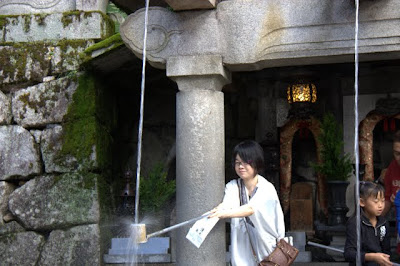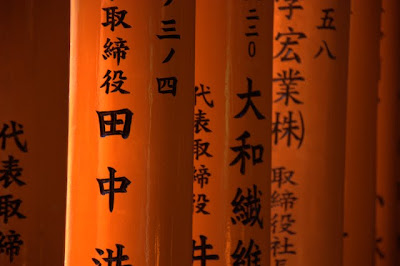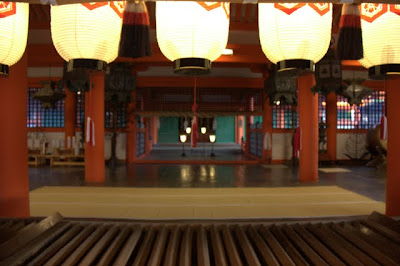The Precipice of Koyo
Like watching cherry blossoms in the spring, viewing koyo – autumn foliage – is a national pastime in Japan in the fall. The weather person reports on the best koyo, and websites track the progress all over the country. Without going way north, we were there just a tad too early (the last week of September through the third week in October). The weather grew from warm to cool while we were there, and everything felt like it was on the verge of turning to full blown fall, but the elusive koyo failed to materialize. Meanwhile, all around us were advertisements for the best koyo spots, showing the landscapes ablaze in firey reds and oranges. I kept my eye out wherever we went. We managed to spot a few places where the leaves had turned, but nothing like the posters.
In the Japanese gardens, everything felt like it was on the precipice of fall, but not quite there yet.
It was comforting to be somewhere where the season aligned with the season at home. Not that I’d want to trade places on the basis of weather now!
Shirakawa-go
High up in the Japanese Alps sits a little village called Shirakawa-go. There, because of the snow that falls every winter, villagers built homes with steeply pitched thatched roofs. The quaint little mountain town is a World Heritage site. Although tourists, mostly Japanese, traipse through the town, people still live there, lighting fires on the first floors for warmth and nurturing silk cocoons on the second floors for income. The day we visited, a house’s roof was being re-thatched. We went to Shirakawa-go to see the houses, but I found another pleasant surprise. The town is bursting with flowers, meaning that I ended up with just as many pictures of the flowers as the houses.
Scenes from Kyoto: Temple Edition
Although viewing temples and shrines got a little old, and not all stacked up to my favorite, Kyoto’s temples and shrines have some fantastic imagery. Here are some scenes from Kyoto’s many temples (and we only visited a fraction of them):
My Favorite Shrine
We saw a lot of shrines and temples while we were in Japan. It is kind of hard to avoid them; they are everywhere, even tucked into little spaces between buildings. Although many of them have intricate details, a lot of them started looking the same. One shrine in particular stood out as my favorite: the Fushimi Inari shrine on the outskirts of Kyoto. It is the headquarters of the Shinto religion in Japan and is made up of a series of vermillion torji gates. We followed a path under gate after gate up and down a tree covered hillside. It was so peaceful there (minus my grumblings towards the top of the hill).
Scenes from Miyajima
[Editor’s note: As much as I miss my friends and family and wish I was eating turkey today, I’m very thankful we have this incredible opportunity to travel around the world for a year and see amazing things like Miyajima. I know you all (at least the you all that are in the United States) are not reading this today, you’ve got turkey to eat and football to watch, but just getting caught up so you have a way to procrastinate Monday morning. Happy Thanksgiving!]
Miyajima is an island close to Hiroshima, home to street-roaming deer, a scenic Buddhist shrine, and an iconic vermillion Tojii gate that appears to be floating in the water during high tide. We timed our visit with high tide and sunset, and found a peaceful island with roaming deer and an ethereal beauty. Here’s some scenes from our visit:




































